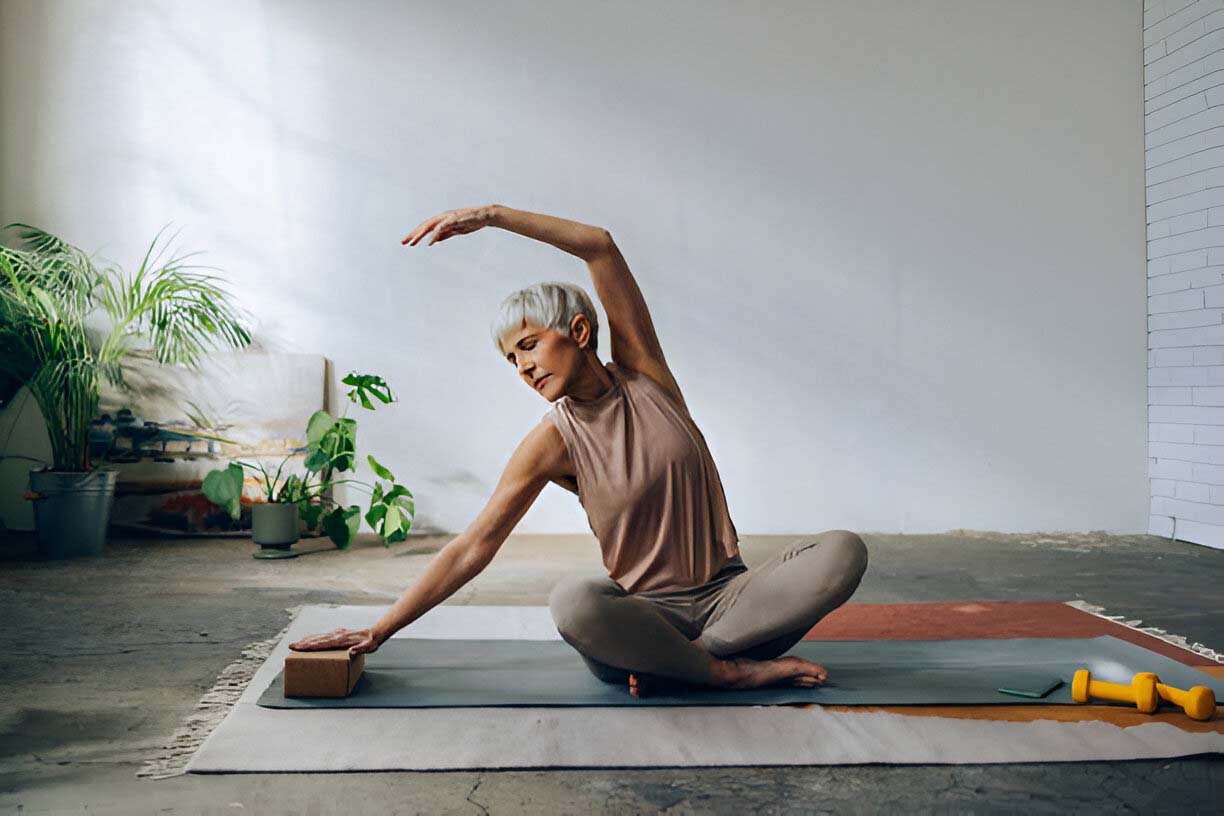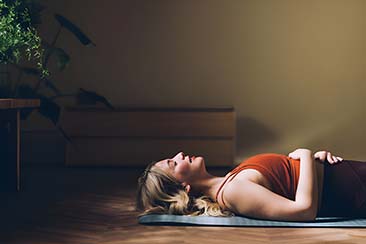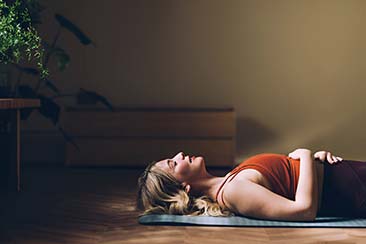Wellness Trends for 2025: A series of posts designed to uncover the most progressive concepts in wellness for the year ahead. Number Three: Movement as Medicine.
With every step, stretch, and movement we make, our bodies are performing an act of self-care. While physical activity has long been touted as essential for maintaining fitness, a new wellness paradigm is emerging that emphasizes movement as an essential form of medicine. Going beyond traditional exercise, “Movement as Medicine” encourages incorporating a variety of physical activities to support both physical and mental health. This approach reframes movement as a healing practice, one that supports everything from mobility and strength to emotional resilience and stress relief.
This comprehensive guide explores the concept of movement as medicine, delving into the scientific evidence, practical techniques, and emerging trends that are shaping this modern wellness approach.

Understanding Movement as Medicine
At its core, “Movement as Medicine” represents a shift away from structured, often rigorous fitness routines to a more holistic view of movement. The concept posits that physical activity is not solely about weight loss or muscle gain, but rather about cultivating a balanced, mobile, and resilient body. Modern life has become increasingly sedentary, with long hours spent sitting at desks, in cars, and in front of screens. As a result, many people experience not only physical ailments, like back pain and stiff joints, but also mental health challenges linked to inactivity.
Movement, in all its forms, is powerful medicine. Studies show that regular physical activity can reduce the risk of chronic diseases, improve mental health, and increase longevity. Embracing movement as a daily habit—whether it’s a morning stretch, an afternoon walk, or an evening yoga class—offers numerous health benefits and is key to a well-rounded wellness routine.

Why Is Movement So Essential to Health?
Movement plays an integral role in the body’s functions. When we move, we’re stimulating our circulatory, lymphatic, and nervous systems, which aid in everything from detoxification to mood stabilization. Research continues to reveal the depth of these benefits:
Cardiovascular Health: Regular movement improves heart health, strengthens muscles, and promotes blood flow, reducing the risk of cardiovascular diseases like hypertension, stroke, and heart attack.
Cognitive Function and Brain Health: Physical activity releases chemicals such as endorphins and dopamine, which are linked to improved mood and focus. Movement also increases blood flow to the brain, supporting cognitive function and potentially lowering the risk of neurodegenerative diseases.
Joint and Bone Health: Movement increases bone density, flexibility, and joint strength, protecting against conditions like osteoporosis and arthritis. Functional exercises can improve balance and reduce the risk of injury.
Mental and Emotional Well-being: Beyond its physical benefits, movement reduces stress, alleviates symptoms of anxiety and depression, and promotes a sense of accomplishment and well-being.
By integrating varied forms of movement into daily life, people can enjoy these health benefits while also fostering a more mindful, health-oriented relationship with their bodies.
Types of Movement in the “Movement as Medicine” Approach
The beauty of movement as medicine is its inclusivity: any type of movement, at any fitness level, can be beneficial. The aim is to embrace a variety of movements that cater to different aspects of health and fitness. Here are some key types:
1. Functional Movement
Functional exercises mimic real-life activities, enhancing the body’s ability to perform everyday tasks. Examples include squats, lunges, and resistance training, which help build strength, flexibility, and coordination. Functional movement is particularly effective in preventing injuries and supporting mobility as we age.
2. Expressive Movement
Movement can be a powerful form of self-expression, as seen in dance, martial arts, and other activities that allow for creativity and release. These activities not only improve fitness but also serve as emotional outlets, reducing stress and boosting confidence.
3. Restorative and Mobility-Focused Movement
Gentle exercises like yoga, tai chi, and Pilates focus on flexibility, balance, and relaxation. These movements are especially beneficial for improving posture, reducing joint pain, and promoting relaxation. Studies have shown that restorative movement practices can significantly improve mental health, reduce stress, and help people manage chronic pain.
4. Low-Impact Movement
Low-impact activities like swimming, cycling, and walking provide cardiovascular benefits without the joint strain of high-impact exercises. Low-impact movement is ideal for people of all ages and fitness levels, offering a sustainable way to stay active and healthy.
5. High-Intensity Interval Training (HIIT)
HIIT workouts are short, intense bursts of exercise followed by rest periods. HIIT has been shown to improve cardiovascular health, build muscle, and burn fat in a fraction of the time compared to traditional workouts. While it may not be suitable for everyone, HIIT can be a powerful tool when used in moderation as part of a balanced movement regimen.

How Movement Benefits Mental Health
The mental health benefits of movement are widely recognized, and new research continues to support the link between physical activity and improved psychological well-being. Here’s how movement can positively impact mental health:
Stress Relief: Physical activity helps reduce cortisol levels, a hormone associated with stress. Movement, particularly rhythmic activities like walking or dancing, can induce a meditative state, allowing the mind to relax and reset.
Mood Boost: Endorphins, serotonin, and dopamine are released during exercise, which can lift mood and alleviate symptoms of depression. This is particularly beneficial for those with mental health disorders, as movement serves as a natural antidepressant.
Increased Resilience: Regular movement fosters a sense of routine and discipline, helping people manage anxiety and build emotional resilience. Activities that involve mindful movement, such as yoga and tai chi, are known to promote self-compassion and emotional awareness.
Enhanced Sleep Quality: Exercise helps regulate sleep-wake cycles, reducing insomnia and promoting deeper sleep. Restorative movement practices, such as gentle stretching or yoga before bed, can further enhance relaxation and improve sleep quality.
Practical Ways to Incorporate Movement as Medicine
For many, the challenge lies in integrating movement into their daily lives. Here are some practical strategies for embracing movement as a regular part of a wellness routine:
1. Set Small, Achievable Goals: Rather than committing to an hour at the gym every day, start with short, manageable goals, like a 10-minute morning stretch or an evening walk. Over time, these small habits can evolve into a comprehensive movement practice.
2. Incorporate Movement Throughout the Day: Movement doesn’t have to be confined to a workout. Standing up to stretch every hour, taking the stairs instead of the elevator, or doing simple exercises while watching TV can all contribute to a more active lifestyle.
3. Choose Activities You Enjoy: The best movement routine is one that you enjoy and look forward to. Whether it’s dancing, gardening, or practicing yoga, find activities that bring you joy and incorporate them into your routine.
4. Create a Supportive Environment: Joining a movement group or finding an exercise buddy can provide motivation and accountability. Many people find that exercising in a community setting, like a yoga class or dance group, enhances the experience and helps maintain consistency.
5. Practice Mindful Movement: Approach movement with a mindful attitude, focusing on each movement’s sensation and benefits. This not only helps prevent injury but also enhances the mental health benefits of movement by fostering a connection between mind and body.
The Future of Movement as Medicine: Trends to Watch
As the understanding of movement as medicine grows, the wellness industry is embracing new techniques and technologies. Here are a few trends to keep an eye on:
Wearable Technology for Movement Tracking
Devices that track movement, heart rate, and calories burned are becoming increasingly sophisticated. These wearables provide personalized feedback and encourage users to incorporate more movement into their daily routines.
Movement Therapy for Mental Health
More therapists are integrating movement therapy, such as dance or somatic movement, into their practices to support mental health. This approach leverages the mind-body connection to help clients process emotions and manage stress.
Virtual and At-Home Workouts
Online classes and virtual training apps are more popular than ever, allowing people to engage in a wide variety of movement practices from home. This accessibility empowers people to make movement a consistent part of their lives, regardless of location or schedule.
Personalized Movement Plans
As the wellness industry becomes more personalized, some practitioners are designing individualized movement plans based on clients’ specific needs and health conditions. These customized programs take into account lifestyle, preferences, and goals, providing a unique roadmap to well-being.
Embracing Movement for a Healthier, Happier Life
The concept of movement as medicine represents a holistic, sustainable approach to health and wellness. By reframing movement as a daily practice that supports both physical and mental health, people can cultivate a deeper connection with their bodies and embrace a lifestyle that promotes resilience, flexibility, and vitality.
Incorporating movement into daily life doesn’t require drastic changes or rigorous workouts. It’s about embracing movement in all forms, recognizing its benefits, and making it a natural part of a healthy lifestyle. Movement as medicine isn’t just a trend; it’s a transformative approach to wellness that has the power to improve lives in meaningful ways.
As we continue to explore the potential of movement for health, it’s clear that even the smallest gestures—a stretch, a walk, or a mindful breath—can lead to a stronger, more balanced self.








